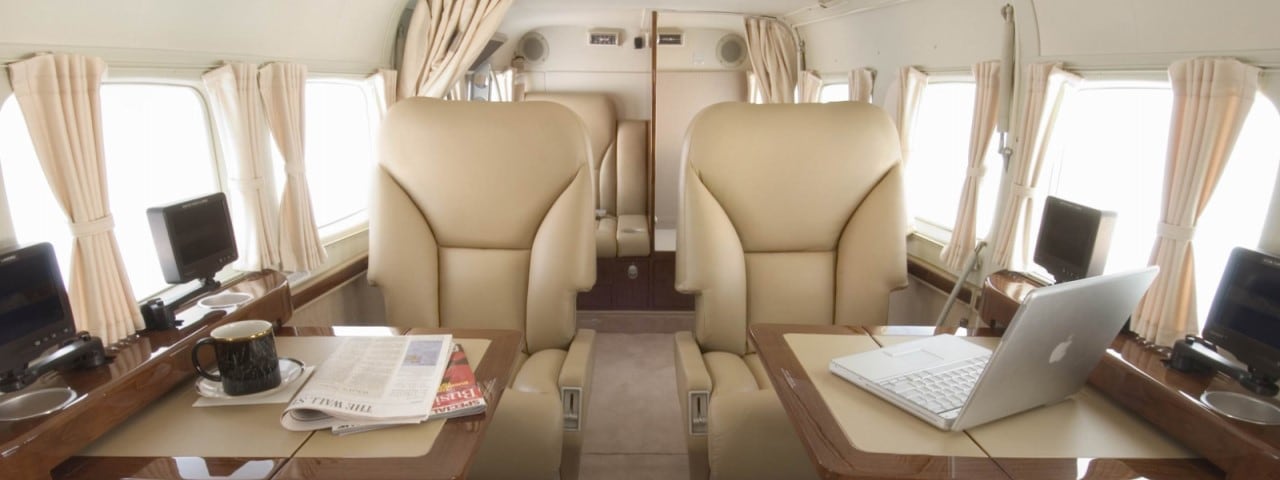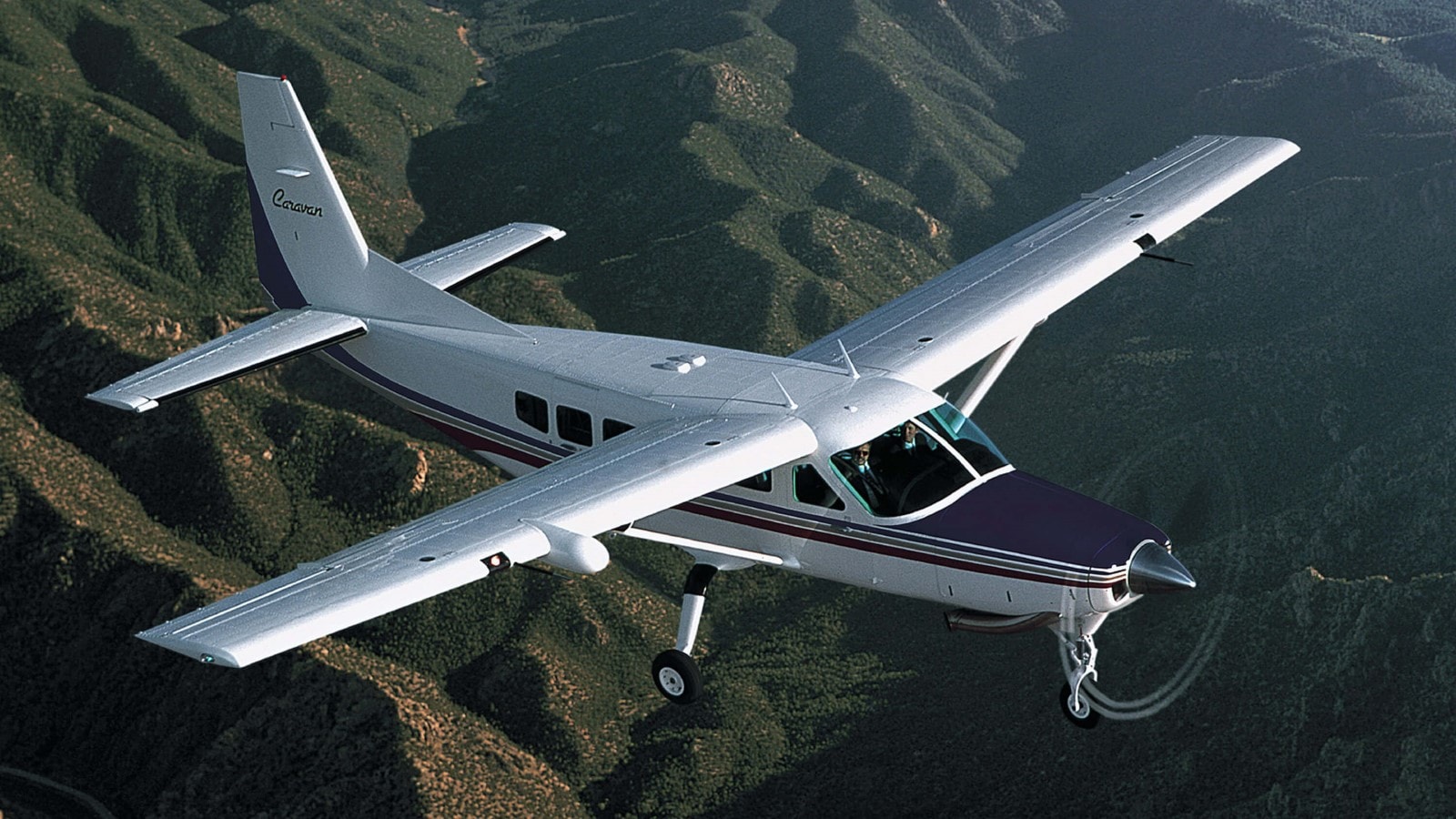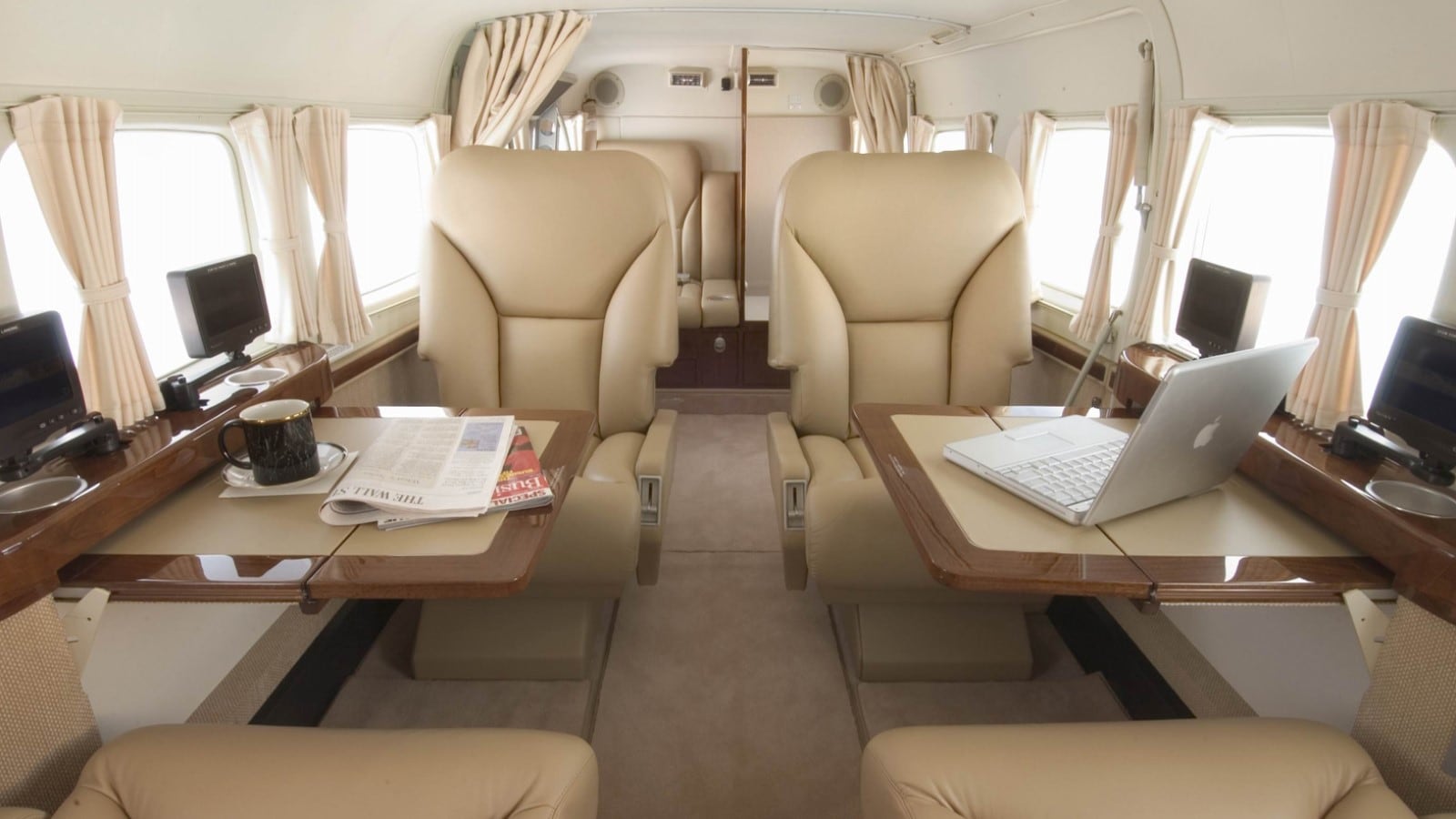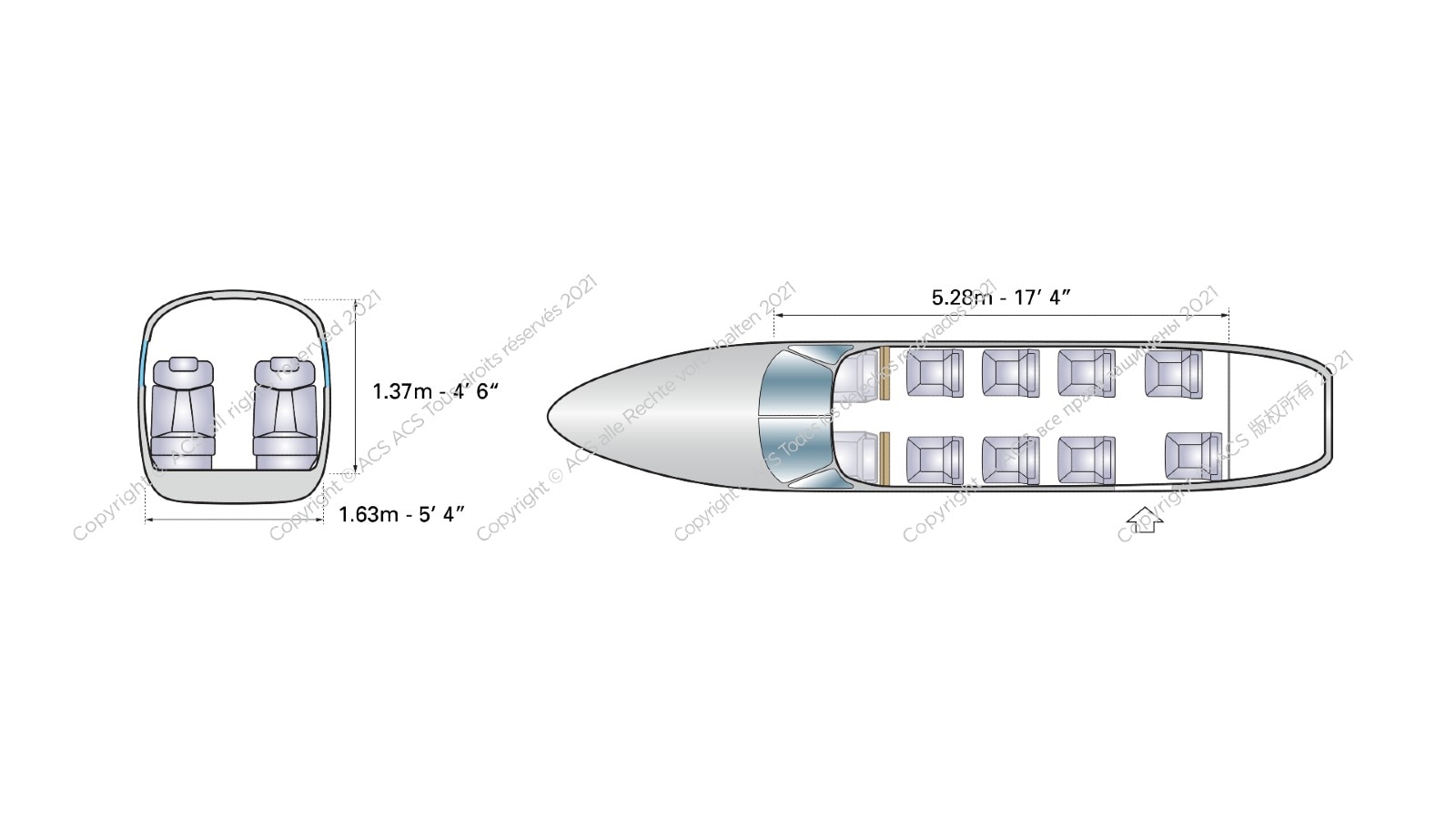CESSNA 208 CARAVAN
- Passengers 8
The Cessna 208 Caravan and its many variations are popular single-engined turboprops that typically fly eight passengers on short-haul regional flights and reach hard-to-access airstrips.
About this aircraft
- The original Cessna 208 Caravan was certified in 1984 and has since undergone a number of design evolutions.
- Its cabin can seat between six to nine passengers depending on configuration. If owned, a further passenger can sit in the cockpit with a single pilot, although this isn’t possible on a charter.
- The original Cessna 208 can travel almost 2,000 km depending on variables.
- Its baggage compartment is large enough for one suitcase per passenger.
- The aircraft is known for its ability to use rough fields and airstrips, its economical operation and its versatility for high speeds and heavy loads.
- Over 1,500 Caravans have been delivered since the 208 entered service.
The Cessna 208’s popularity and versatility have led to many variants. The 208 Caravan 675 has higher-powered engines, while the 208 Cargomaster is a windowless version designed to carry goods. The 208B Grand Caravan is longer and carries more passengers; the Super Cargomaster is the same size but designed to carry goods. The latest 208B Grand Caravan EX is fitted with a more powerful Pratt & Whitney Canada PT6A-140 engine.
Interior design

A 208 Caravan is usually configured to carry six to nine passengers. The six-seater layout normally features four seats in a club formation at the front and two at the rear; while the eight-seat configuration features six seats in a 1:1 formation with the same two seats as the six-seater at the back. A nine-seat variation has three seats at the rear of the aircraft. The heated and ventilated cabin can be fitted with air-conditioning.
Below is a standard configuration found inside a Cessna 208 Caravan.

Interesting facts to learn before you fly
- Newer, refurbished 208 Caravan models may feature screens and more modern furnishings.
- The aircraft can land in almost any rugged conditions, making it ideal for remote airports.
- The Cessna 208B Grand Caravan is a slightly larger version of the original.
- The 208 Caravan Amphibian has floats and can be flown into hard-to-reach sea ports.
Technological features
The Cessna 208 Caravan is powered by a single Pratt & Whitney PT6A-114 turboprop engine, which drives a three-bladed constant speed reversible pitch and feathering propeller.
The avionics suite is based on the operator’s choice of Honeywell or Garmin avionics. The Honeywell Silver Crown suite can include a radio flight control system with KWX 56-colour weather radar, KLN 94 global positioning system with a full colour moving map display, KMD 850 multi-function display and digital KFC 225 autopilot with an altitude preselect command.
The Garmin GNS 340 navigation and global positioning system comprises a GNS 530 wide area active surveillance radar and instrument flight rules communications. Newer Caravan models have a glass cockpit with a Garmin G1000 integrated avionics system.
History
The Caravan I, also known as Model 208, was introduced in 1985 as a simple load-hauler, built for rugged operations and designed for simplicity, relatively low maintenance costs and field maintainability. Federal Express was the biggest customer and Cessna developed a cargo version called the Cargomaster specifically for the delivery company, followed by the 208B Super Cargomaster in 1986 with a longer fuselage and a cargo pod under the belly.
Following the success of the original 208, Cessna developed a passenger version of the 208B Super Cargomaster and named it the 208B Grand Caravan. Since then, the Caravan has undergone a number of design evolutions, including upgraded avionics in 2008. In 2013 a higher-powered version of the 208B, the Grand Caravan EX, received FAA certification.
Manufacturer
Cessna was founded in 1927 by Clyde Cessna and Victor Roos. It was originally called the Cessna-Roos Aircraft Company, but Roos’ name was dropped after he resigned just one month into the partnership and sold back his interest to Cessna.
Headquartered in Wichita, Kansas, the company specialised in producing small piston-powered planes and business jets. After becoming one of the world’s biggest general aviation producers, it was bought by General Dynamics in 1985 and by Textron in 1992. In March 2014, Cessna stopped operating as a subsidiary company and joined Beechcraft and Hawker as one of the three distinct brands produced by Textron Aviation.
Cost
Depending on many factors, the average cost of a Cessna 208 Caravan is around $2.1 million (USD).
Charter rates
Charter rates for the Cessna 208 Caravan can vary greatly depending on the length of the journey you have planned, as well as the airports you decide to fly in and out of.
If you’d like to book a private charter flight on the Cessna 208 Caravan, contact our team. For information on other private jets for charter, browse our list of available aircraft.
Wet lease rates
ACMI (Aircraft, Crew, Maintenance, Insurance) wet lease rates for the Cessna 208 Caravan can vary depending on the age of the aircraft, length of the lease term, the number of block hours being guaranteed and the average cycle ratio.


